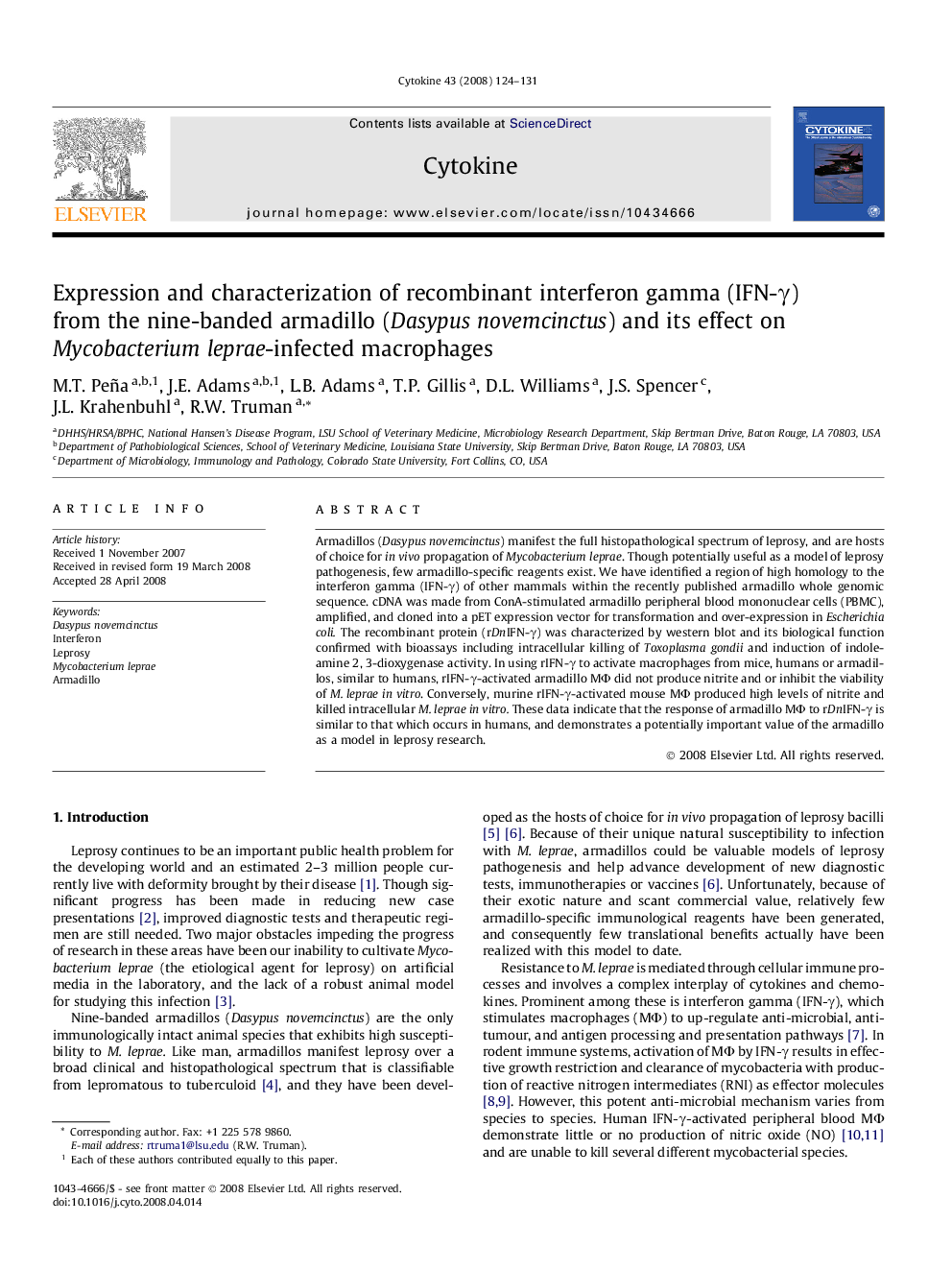| Article ID | Journal | Published Year | Pages | File Type |
|---|---|---|---|---|
| 5898652 | Cytokine | 2008 | 8 Pages |
Abstract
Armadillos (Dasypus novemcinctus) manifest the full histopathological spectrum of leprosy, and are hosts of choice for in vivo propagation of Mycobacterium leprae. Though potentially useful as a model of leprosy pathogenesis, few armadillo-specific reagents exist. We have identified a region of high homology to the interferon gamma (IFN-γ) of other mammals within the recently published armadillo whole genomic sequence. cDNA was made from ConA-stimulated armadillo peripheral blood mononuclear cells (PBMC), amplified, and cloned into a pET expression vector for transformation and over-expression in Escherichia coli. The recombinant protein (rDnIFN-γ) was characterized by western blot and its biological function confirmed with bioassays including intracellular killing of Toxoplasma gondii and induction of indoleamine 2, 3-dioxygenase activity. In using rIFN-γ to activate macrophages from mice, humans or armadillos, similar to humans, rIFN-γ-activated armadillo MΦ did not produce nitrite and or inhibit the viability of M. leprae in vitro. Conversely, murine rIFN-γ-activated mouse MΦ produced high levels of nitrite and killed intracellular M. leprae in vitro. These data indicate that the response of armadillo MΦ to rDnIFN-γ is similar to that which occurs in humans, and demonstrates a potentially important value of the armadillo as a model in leprosy research.
Related Topics
Life Sciences
Biochemistry, Genetics and Molecular Biology
Endocrinology
Authors
M.T. Peña, J.E. Adams, L.B. Adams, T.P. Gillis, D.L. Williams, J.S. Spencer, J.L. Krahenbuhl, R.W. Truman,
